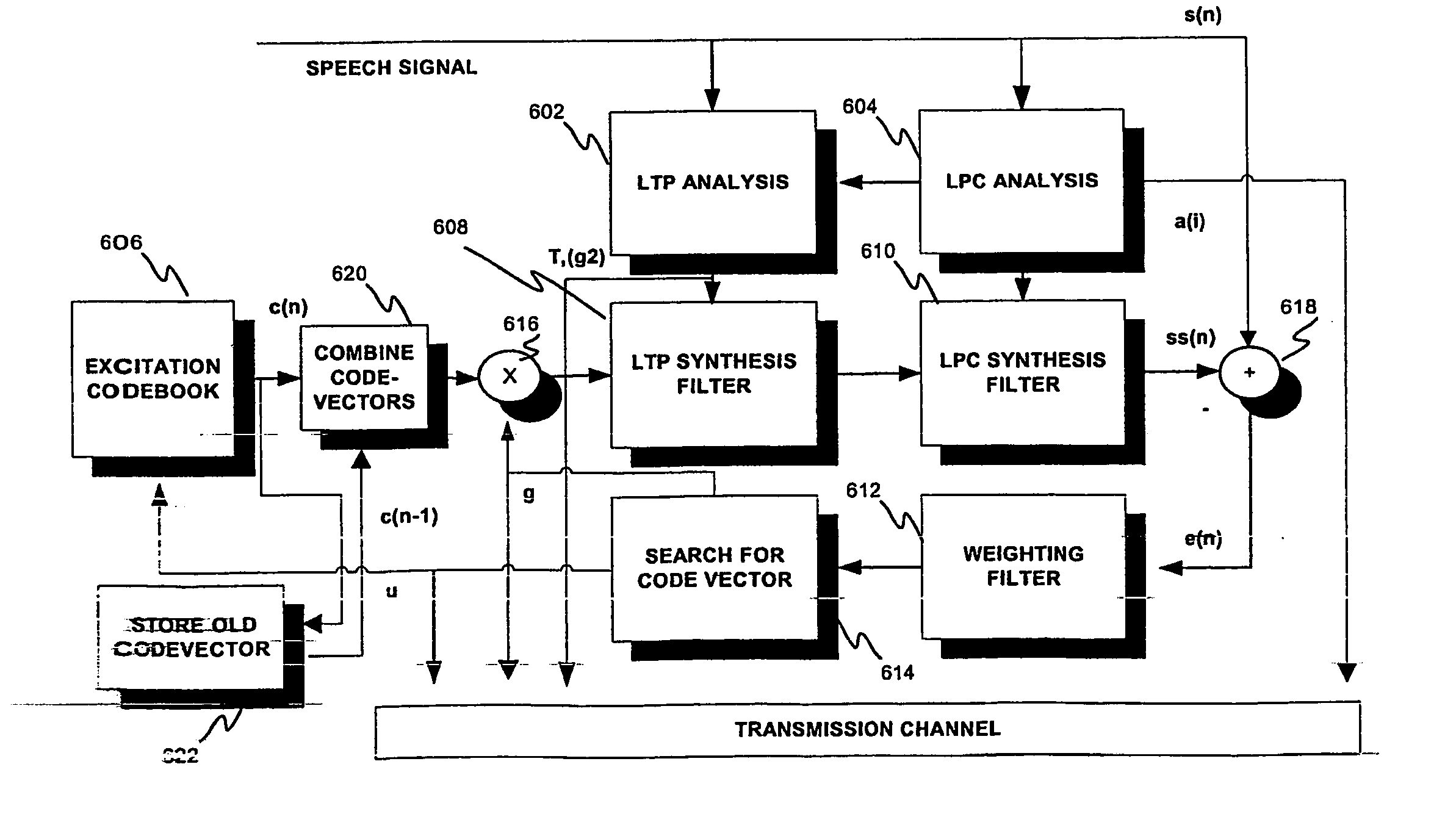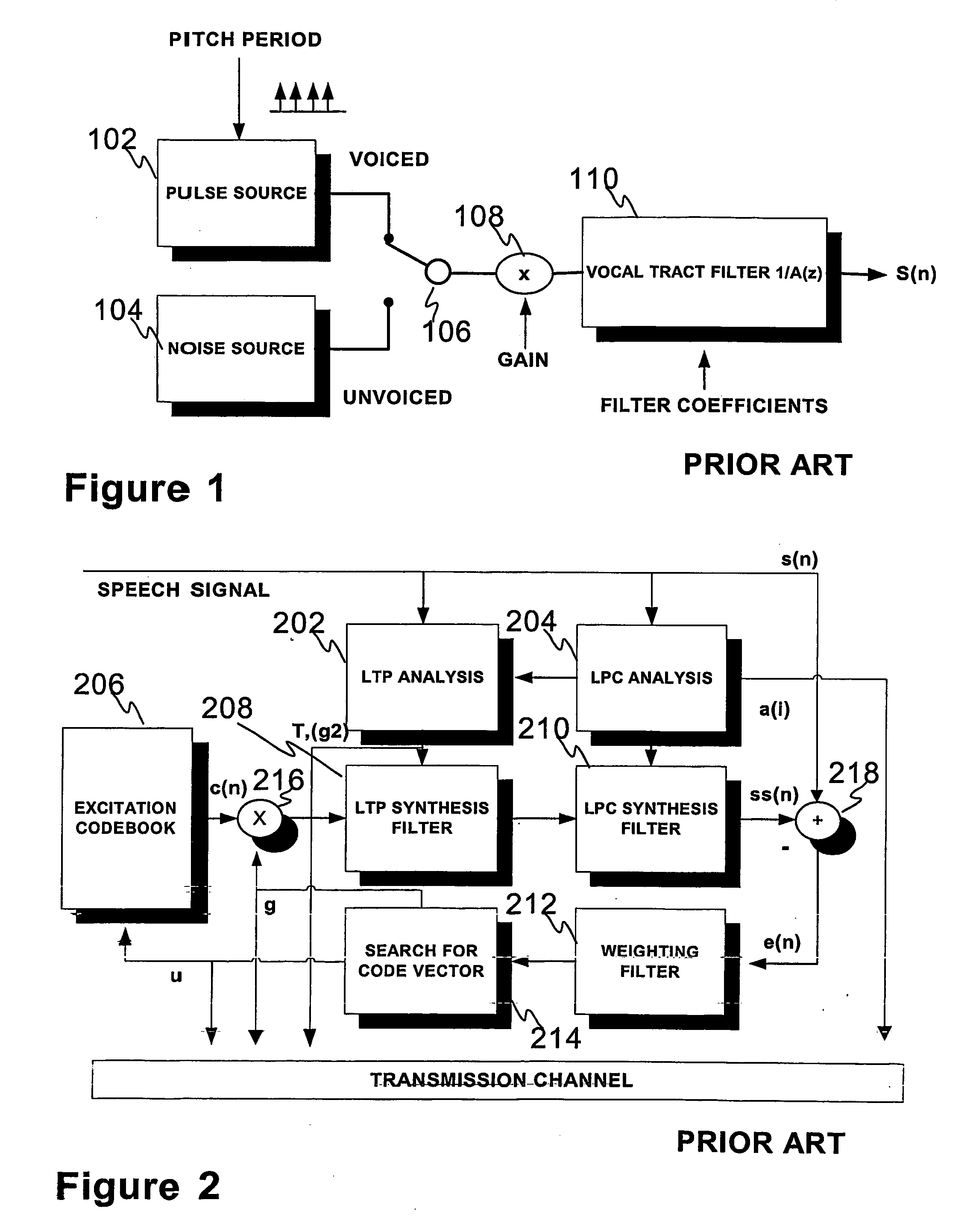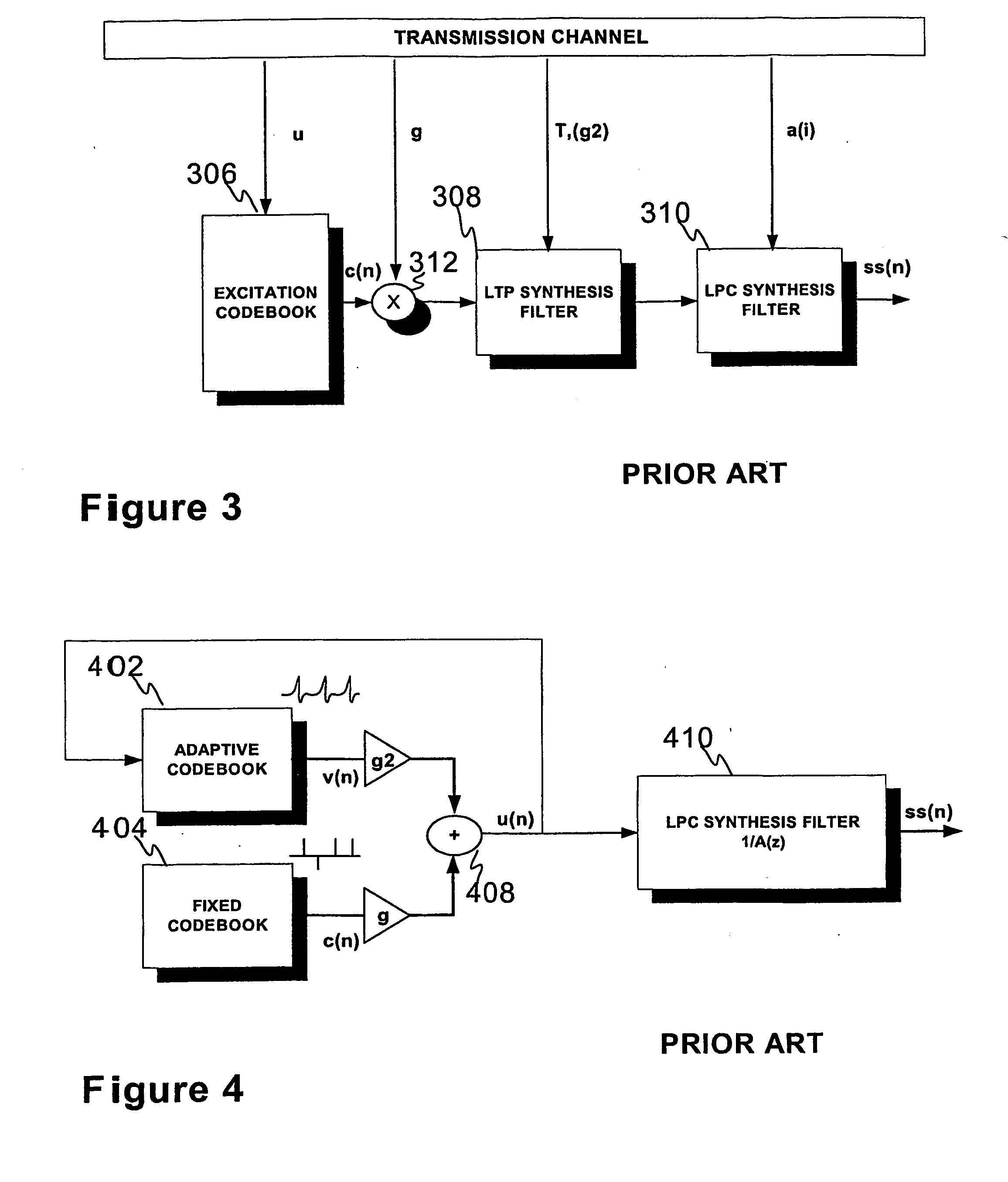Method and a device for source coding
- Summary
- Abstract
- Description
- Claims
- Application Information
AI Technical Summary
Benefits of technology
Problems solved by technology
Method used
Image
Examples
Embodiment Construction
[0065]FIGS. 1-5, 8A, and 9A were already discussed in conjunction with the description of related prior art.
[0066]FIG. 6 discloses, by way of-example only, a block diagram of a CELP encoder utilizing the proposed technique of time advancing the excitation signal. LPC analysis is performed once per frame, and LTP analysis and excitation search for every sub-frame in a frame comprising four sub-frames. The codes also includes a look-ahead buffer for input speech.
[0067] Encoding process of the invention comprises similar general steps as the prior art methods. LPC analysis 604 provides LP parameters, and LPT analysis 602 results lag T and gain g2 terms. Optimal excitation search loop comprises codebook 606, multiplier 616, LTP / adaptive codebook and LPC synthesis filters 608, 610, adder 618, weighting filter 612 and search logic 614. In addition, memory 622 for storing the selected excitation vector or indication thereof for a certain sub-frame and combine logic 620 to join the last h...
PUM
 Login to View More
Login to View More Abstract
Description
Claims
Application Information
 Login to View More
Login to View More - R&D
- Intellectual Property
- Life Sciences
- Materials
- Tech Scout
- Unparalleled Data Quality
- Higher Quality Content
- 60% Fewer Hallucinations
Browse by: Latest US Patents, China's latest patents, Technical Efficacy Thesaurus, Application Domain, Technology Topic, Popular Technical Reports.
© 2025 PatSnap. All rights reserved.Legal|Privacy policy|Modern Slavery Act Transparency Statement|Sitemap|About US| Contact US: help@patsnap.com



